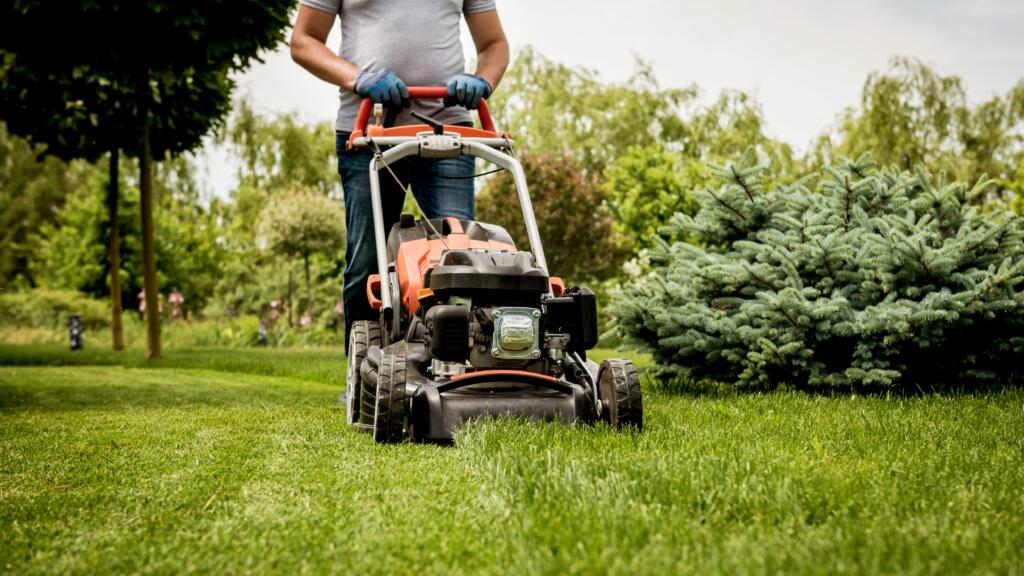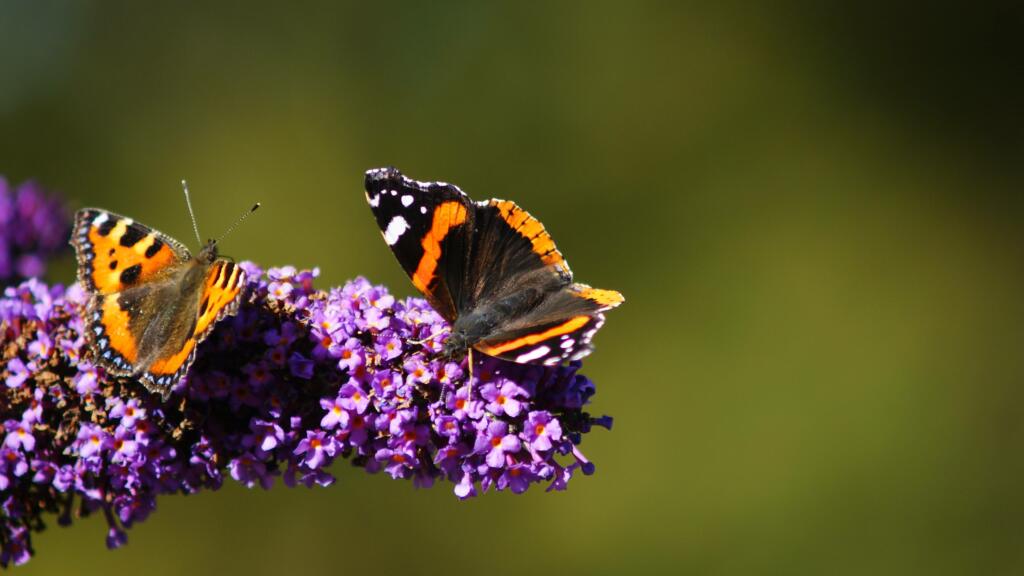
4 ways to protect plants from a late frost – with a top tip from Monty Don
Amy Cutmore
Don’t make these two mowing blunders
Could you be tempted to change your lawn-mowing routine in order to help attract more wildlife to your garden?
That’s exactly what The Wildlife Trusts and Royal Horticultural Society (RHS) are asking of UK gardeners this summer. The organisations have joined forces, offering a rallying cry to gardeners to ‘Bring Your Lawn to Life’ as part of a new campaign.
Could you be tempted to change your lawn-mowing routine in order to help attract more wildlife to your garden?
That’s exactly what The Wildlife Trusts and Royal Horticultural Society (RHS) are asking of UK gardeners this summer. The organisations have joined forces, offering a rallying cry to gardeners to ‘Bring Your Lawn to Life’ as part of a new campaign.
 Credit: Shutterstock / Roman Zaiets
Credit: Shutterstock / Roman ZaietsButterfly populations are down 80%, and garden bird numbers are ‘declining seriously’ across the UK, according to the Royal Society for the Protection of Birds (RSPB). So it’s likely you’ve noticed changes to the amount of wildlife that usually visits your garden.
Yet there could be two simple adjustments you could make to the way you cut your grass that could make all the difference to the number of critters you want to provide a habitat for.
“Lawns, while central to many garden designs, are often overlooked as important ecosystems in favour of the plants in beds that border them,” says Helen Bostock, Senior Wildlife Specialist at the RHS. “But they’re home to a huge amount of wildlife and help mitigate the impact of climate change.”
The two major grass-cutting mistakes made by many gardeners are:
 Credit: Shutterstock / Petrychenko Anton
Credit: Shutterstock / Petrychenko AntonThe ‘Bring Your Lawn to Life’ campaign suggests that gardeners raise the blade on their mower. Cutting the grass too short not only impacts the amount of wildlife that would otherwise benefit from its length, but it can also affect the depth of your grass roots (the longer the grass, the deeper and healthier the root).
The initiative is also asking gardeners to reduce the frequency of mowing to once every three to four weeks. This allows flowers such as dandelion and speedwell to bloom, which helps pollinators.
A manicured lawn stirs feelings of pride in many gardeners around the country. And rightly so – lawns can take a lot of work and dedication to maintain year after year.
But not all gardeners agree that a cropped lawn is the best approach. Monty Don once told the Radio Times magazine: “Cutting grass… is about the most injurious thing you can do to wildlife.
“Letting grass grow – which is, after all, a pretty passive thing to do – is probably the single most effective thing you can do in any garden of any size to encourage particularly insect life, but also small mammals, invertebrates, reptiles.”
The Wildlife Trusts and RHS say that lawns left to grow long are shown to help mitigate flooding by better soaking up rainwater. They also capture pollutants and, through their cooling properties, counter the ‘heat-island effect’ in urban areas. This occurs when warm air becomes trapped at lower levels, as well as the temperature generally being warmer due to human activities.
 Credit: Shutterstock / Yuri Snegur
Credit: Shutterstock / Yuri SnegurLonger grass is also better at resisting browning during dry spells than short grass, owing to its longer roots. These benefits continue into the height of summer and provide all-important habitat for a whole host of insects including ants, bees and butterflies.
Seeding your lawn
If your lawn is damaged and needs a helping hand in order to develop long blades, the Lawn Association suggests the following tips:
If your longer lawn still feels a bit bare, or you’re short on dandelions, then why not add some wildflower seeds into the mix?
You may have not had much luck scattering wildflower seeds or seed ‘bombs’ in the past, and that’s because it helps to sow the seeds in a greenhouse, cold frame or windowsill in early spring. This way, they have a better chance at establishing themselves before planting out into your lawn.
 Credit: Shutterstock / Robert Mertl
Credit: Shutterstock / Robert MertlThe campaign suggests other ways gardeners can adjust their lawn care to attract more wildlife to their garden and support the natural environment:
 Credit: Shutterstock / Fotogenix
Credit: Shutterstock / FotogenixWant to learn more about how a longer lawn can benefit the environment? The Wildlife Trusts and RHS have produced an online guide – Wild About Lawns – that is full of tips and facts about wildlife-friendly lawn care.

Written by Rosanna Spence she/her
Published: Updated:
Rosanna Spence has been a journalist for nearly 10 years, reporting on a huge array of topics – from microwaves to cocktails, sustainable buildings, the Caribbean islands and beyond. She’s interviewed chefs at the helm of Michelin-starred restaurants and chatted to countless CEOs about their businesses, as well as created travel guides for experienced travellers seeking life-changing adventures. Throughout her career, she has created content for Business Traveller, i-escape.com, Pub & Bar, BRITA, Dine Out and many more leading titles and brands.

Amy Cutmore

Rosanna Spence

Rosanna Spence

Rosanna Spence